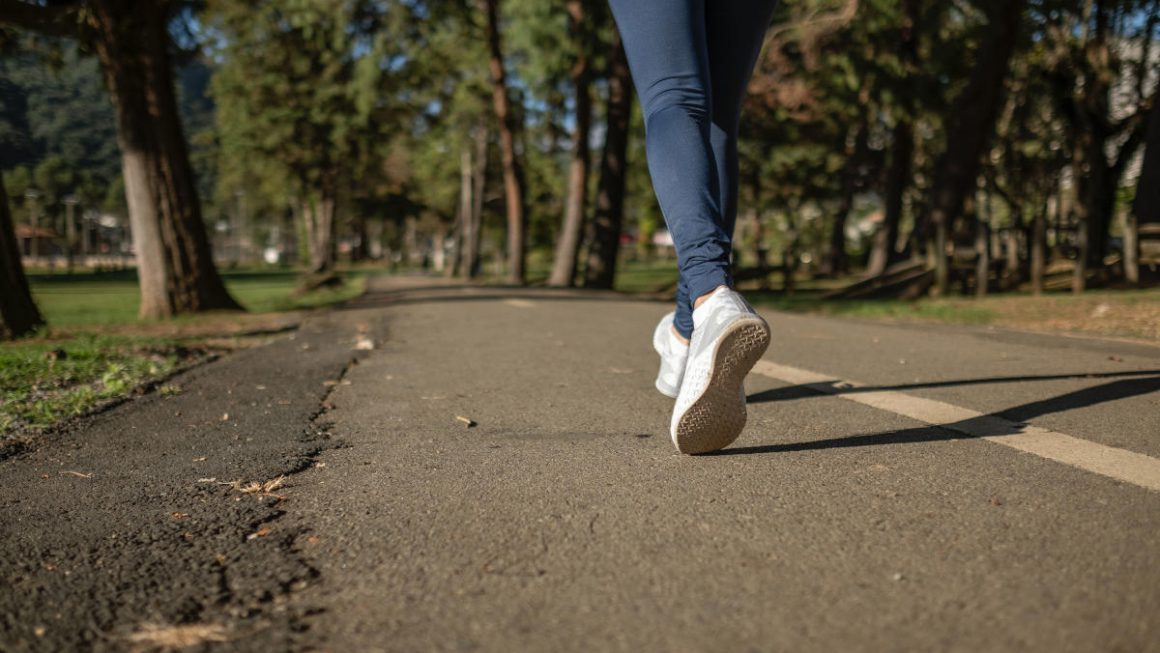This is Part 1 of a multi-part series on the simple act of walking. Be sure to check back regularly as we explore this simple act that has so many benefits.
Walking is Good for You
There are so many reasons walking is good for you, it’s virtually impossible to talk about all of them in one short article. So, think of this as a mini primer. Before we get into the “why” of things, here are some fun and interesting facts about walking:
- Every step you take uses up to 200 muscles.
- The average person walks the equivalent distance of five equators in his or her lifetime.
- Believe it or not, it’s better to swing your arms when you walk. Why? When you don’t, it increases the effort up to 12 percent.
- Under certain circumstances, when you walk, the pressure you put on your feet exceeds your total body weight. If you run, this pressure can be up to three or four times your weight.
- Want to burn more calories? Try walking sideways. It actually gets rid of 78 percent more of the little culprits.
- taking a walk uphill increases cardiovascular fitness and muscle tone.
- It takes approximately one hour 43 minutes to walk off 540 calories, which happens to be the caloric count of a Big Mac. If your meal included a super-size Coke and French fries, you need to walk seven hours to burn the calories.
- If you’re trying to improve your health, experts suggest walking 6,000 steps per day. If you’re trying to lose weight, walk a total of 10,000 steps to get the job done.
- Some people get exercise via walking, even when they don’t want to. Sleepwalking, also known as somnambulism, affects approximately 18 percent of the world’s population.
- The term “walk” comes from the old English word “wealcan,” which means “to roll.”
- It’s extremely important to be constantly aware of your surroundings when you walk. Statistics indicate a person is 36 more times likely to be killed while taking a walk than driving a car and 300 times more likely to be killed walking than traveling via airplane.
Now it’s time to cover some of the many reasons walking is good for you and an excellent way to keep fit. One of the greatest things about walking is the fact that you benefit from it, no matter how much or how little you walk. Of course, the more you walk the better. But, every little bit helps.
The Benefits of Walking
Taking a walk every day is one of the easiest and healthiest things you can do for your body. It costs nothing to take a walk. You can do it anywhere, during any season, and in any weather. Not only do you reap the benefits of being outdoors taking in fresh air and sunshine, if you choose to walk outdoors, but the benefits of walking in any location are far and wide.
Heart Health
Studies show that walking regularly lowers your risk of both heart disease and stroke. Walking gets your heart rate up and causes your body to burn calories. This, in turn, lowers your cholesterol level.
According to The Stroke Association, a half an hour walk every day helps to keep your blood pressure in check and reduces your risk of stroke by up to 27 percent. Walking gives your circulation a boost and helps to increase the levels of oxygen in your blood. This actually leads to feeling more energetic after a short (brisk) walk.
Walking isn’t going to build muscle as effectively as other more strenuous exercises. However, it does help you burn fat and build some muscle, especially in the legs. Walking gives your calves and your thighs quite a workout. It also helps your glutes.
Compared to more high-impact exercises such as running, walking is also very gentle for people with arthritis. It’s relatively easy to choose a route, head outside, and give your muscles the workout they need.
Weight Loss
According to Mayo Clinic, walking isn’t the best way to lose weight. But it certainly helps. To lose one pound per week, consider eliminating roughly 500 calories from your diet each day.
Walking is actually of more importance after you lose weight. Studies indicate the people who are most successful in keeping weight off are those who participate in frequent physical activities. One of the most important things to remember is balance. Overdoing any form of exercise is dangerous. Start slow and gradually build up to a longer regimen.
After 30 minutes of walking at about 2 mph, you’ll have burned around 75 calories. If you manage to get your speed up to around 3 mph, the number goes up to approximately 100 calories. While a single hour of walking may not burn an impressive amount of calories (around as much as, say, a glass of chocolate milk would give you), these numbers add up when you work walking into your routine.
Be sure to continue to Part 2, and Sign up for our newsletter so you’ll know when more installments are published.
Walking Series
- Part 1
- Part 2



